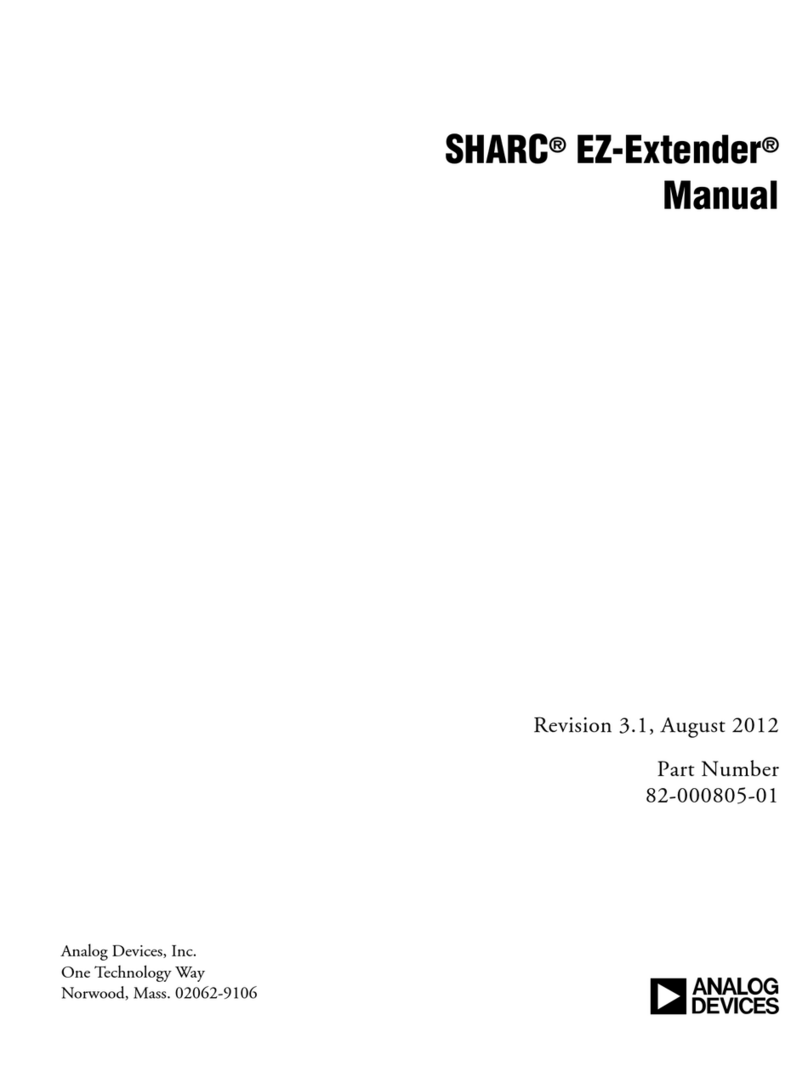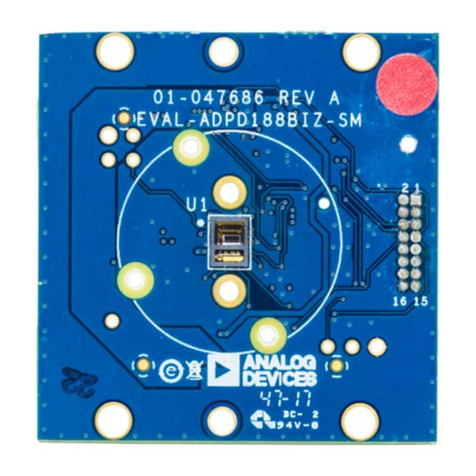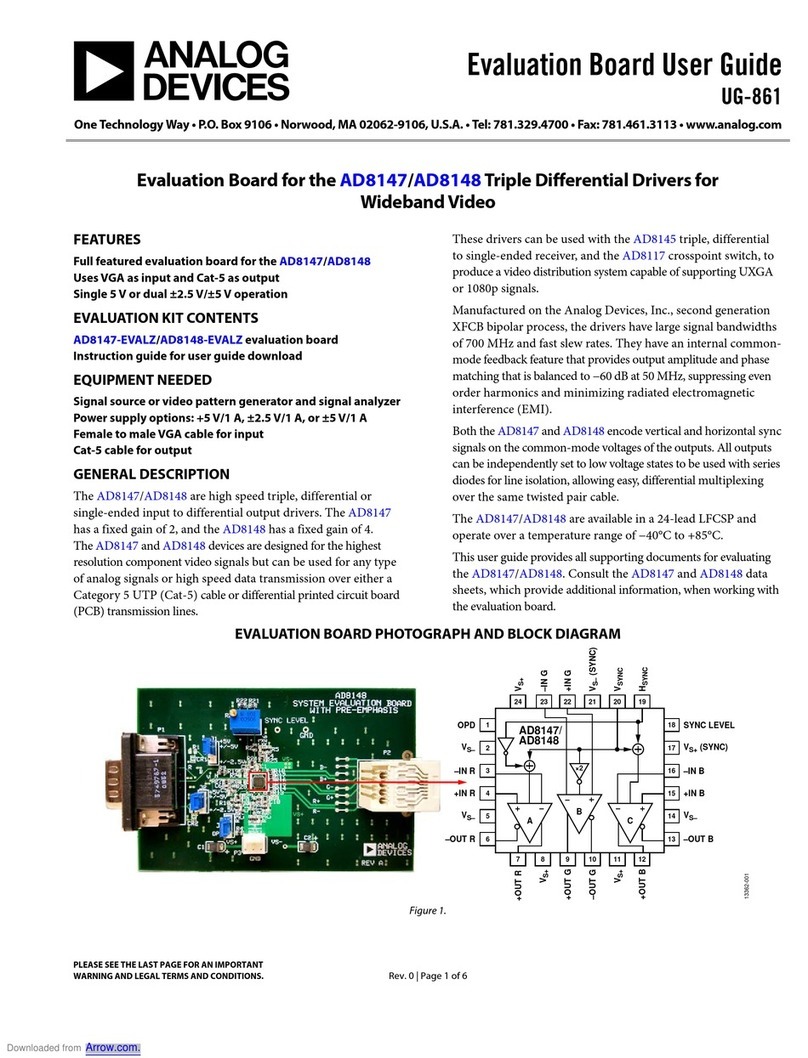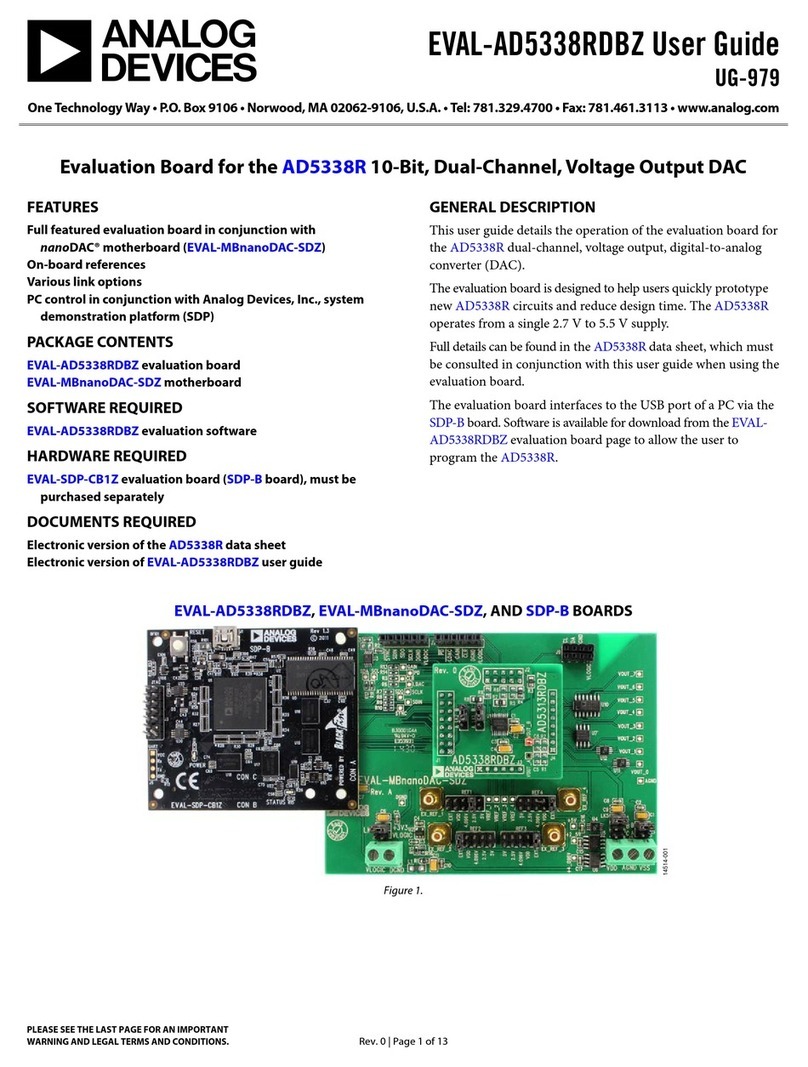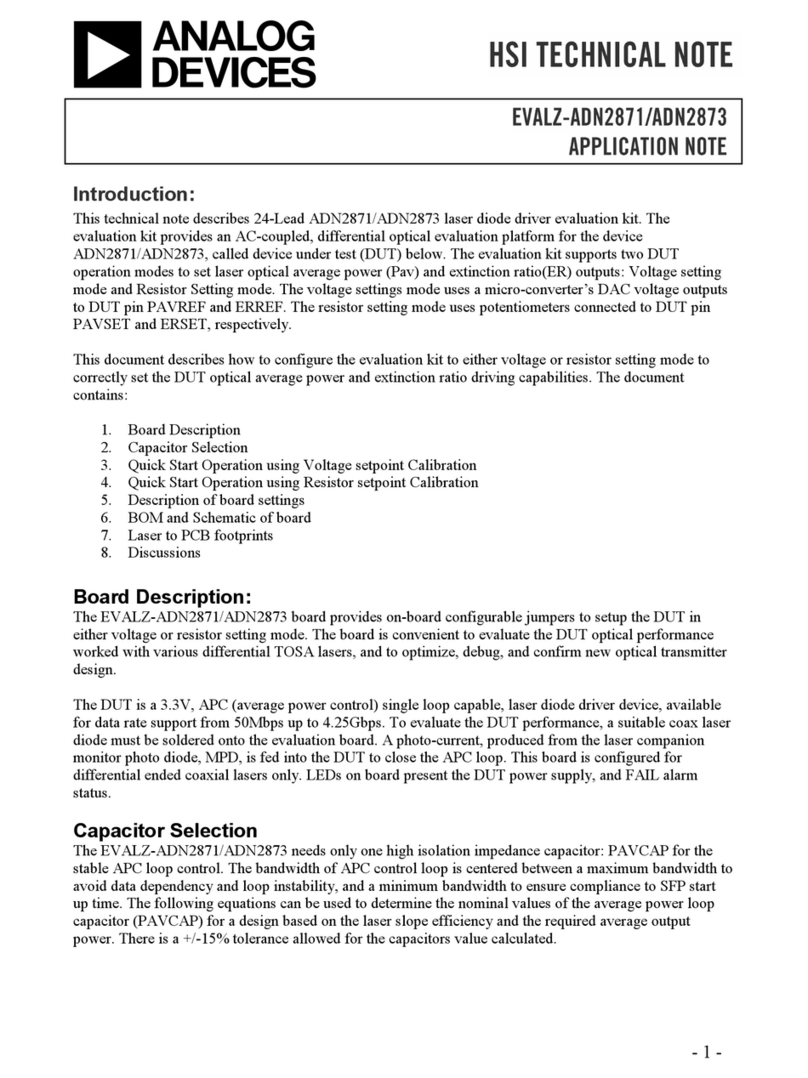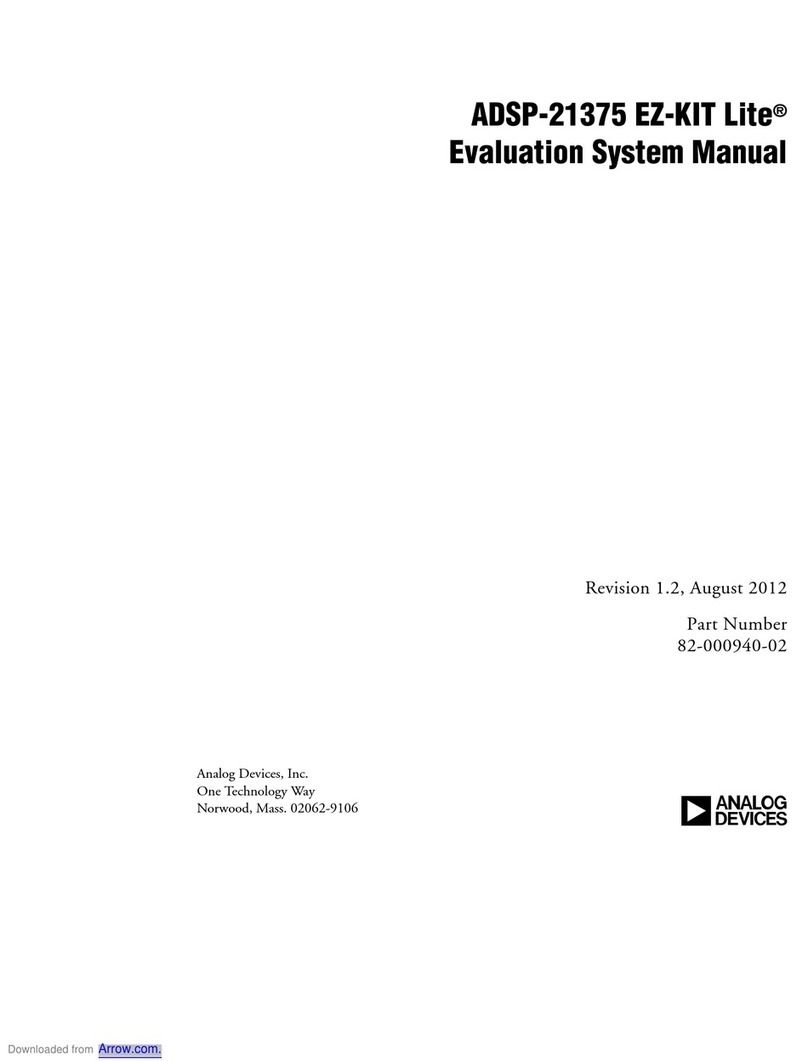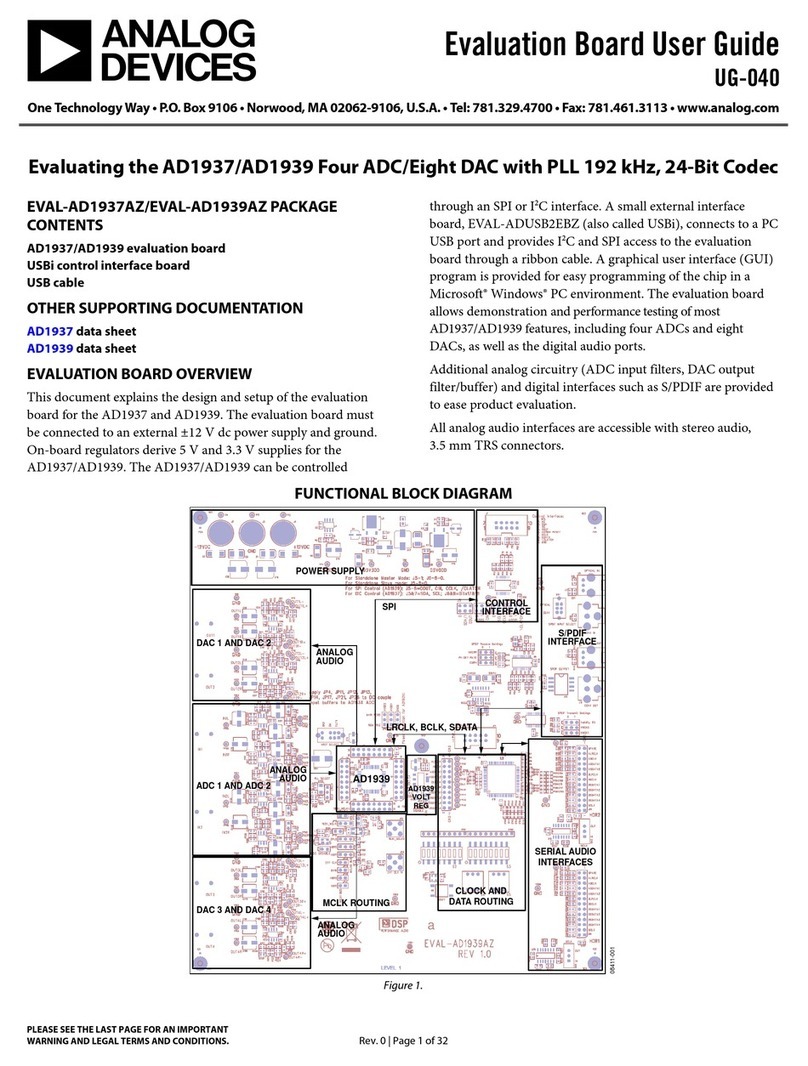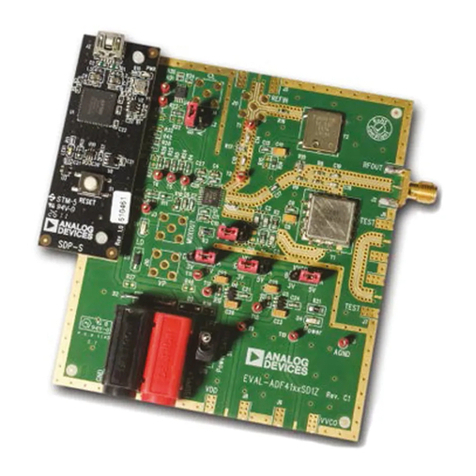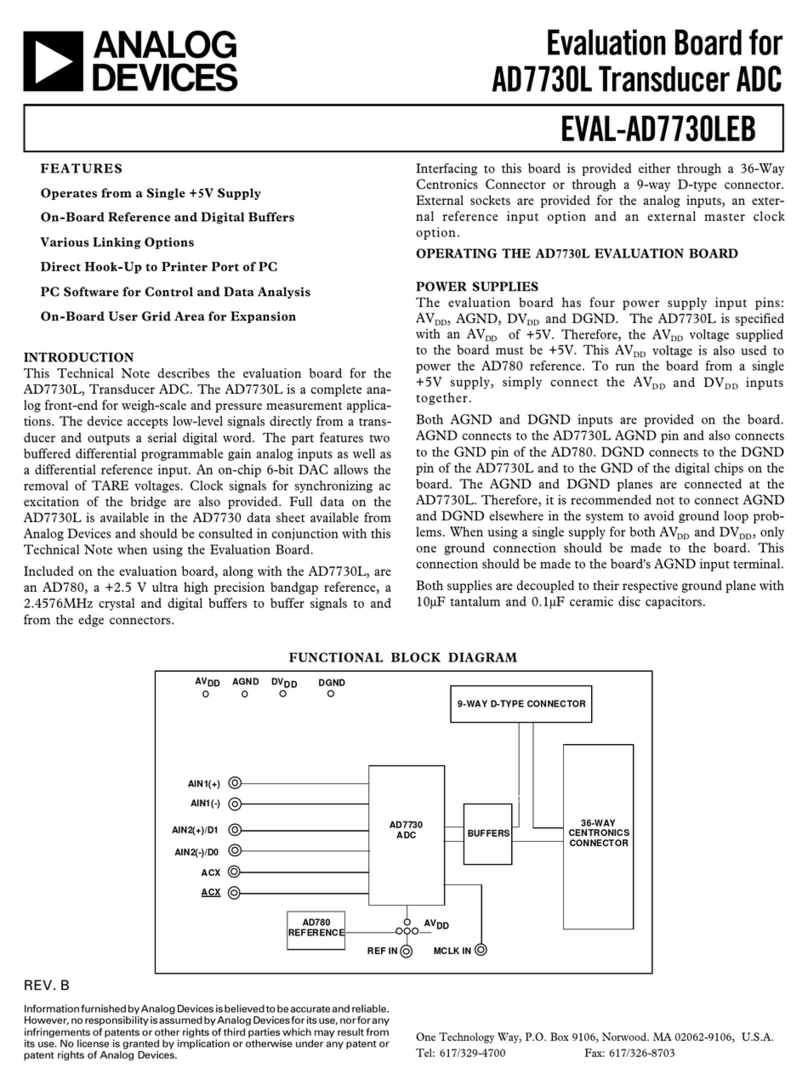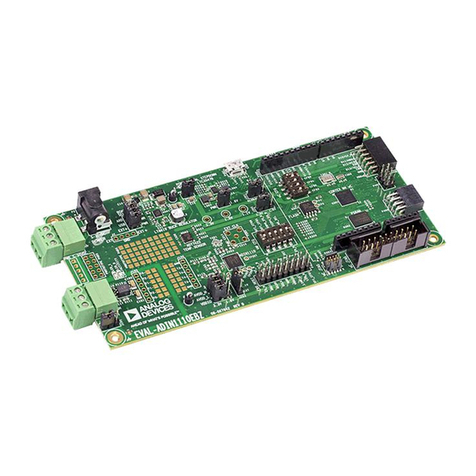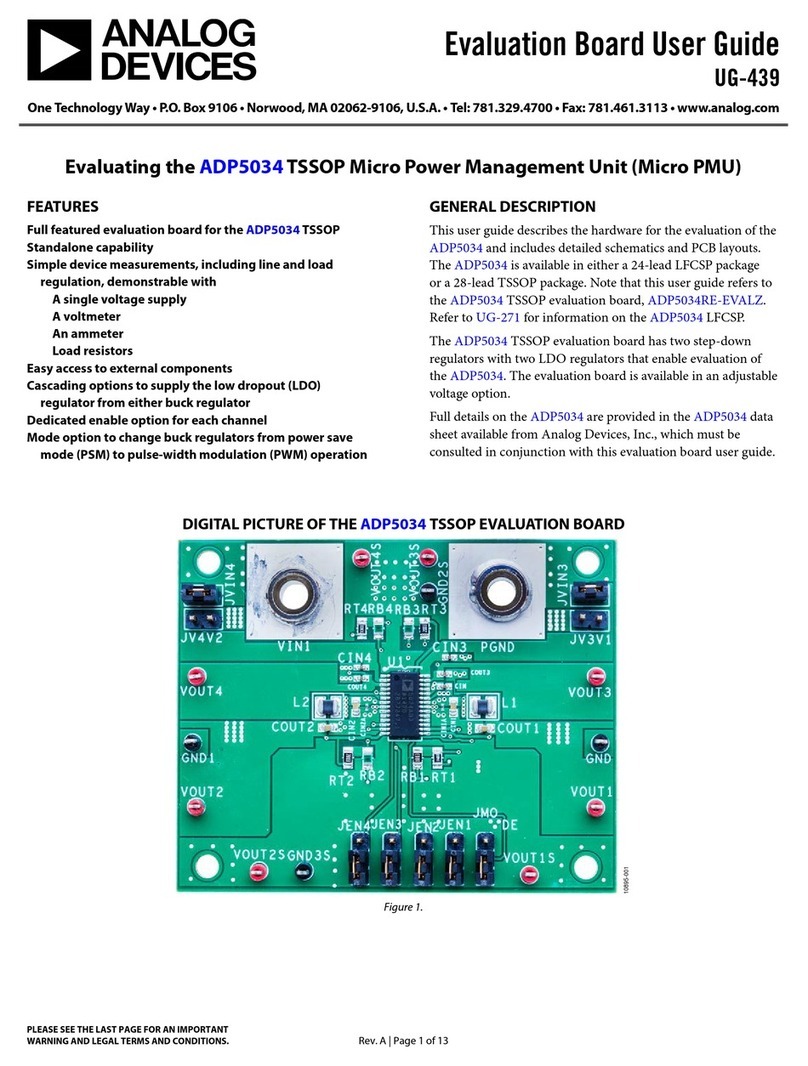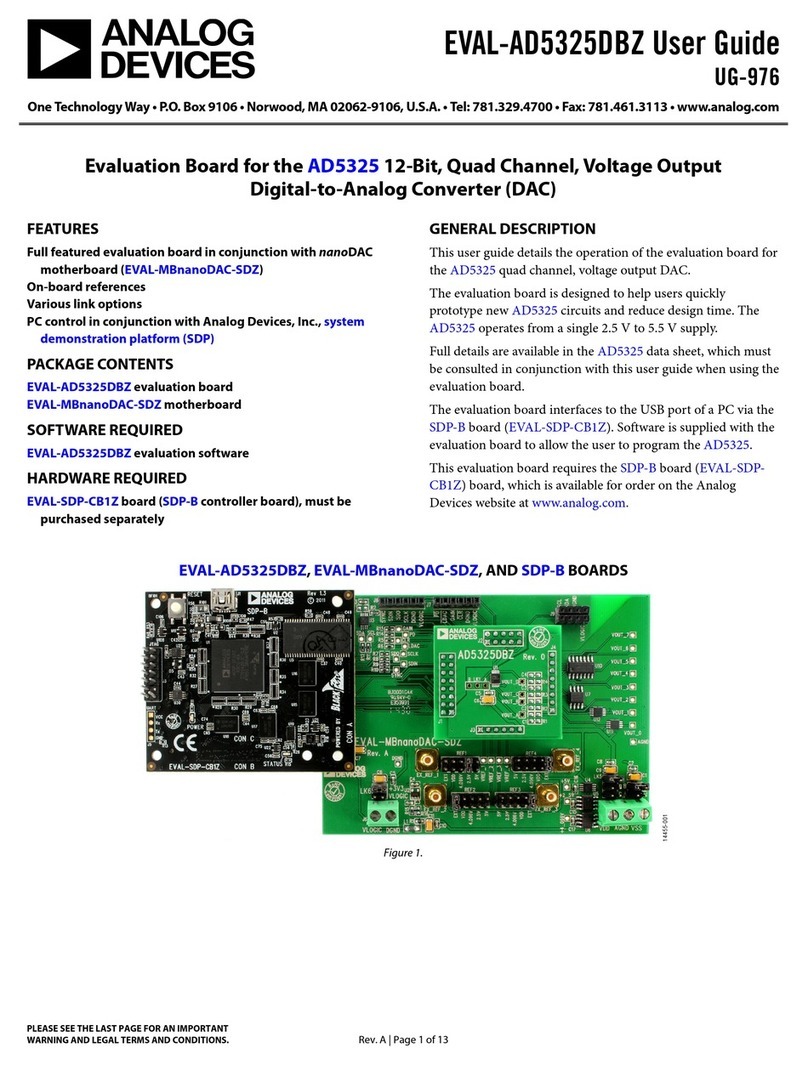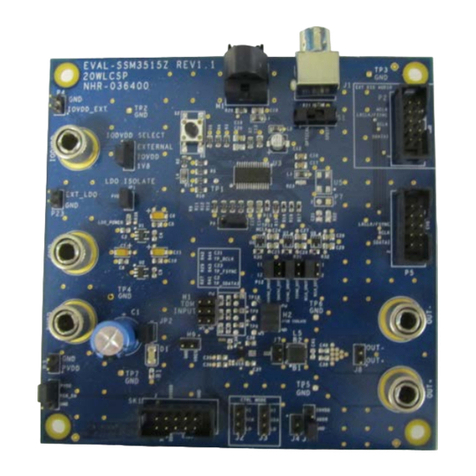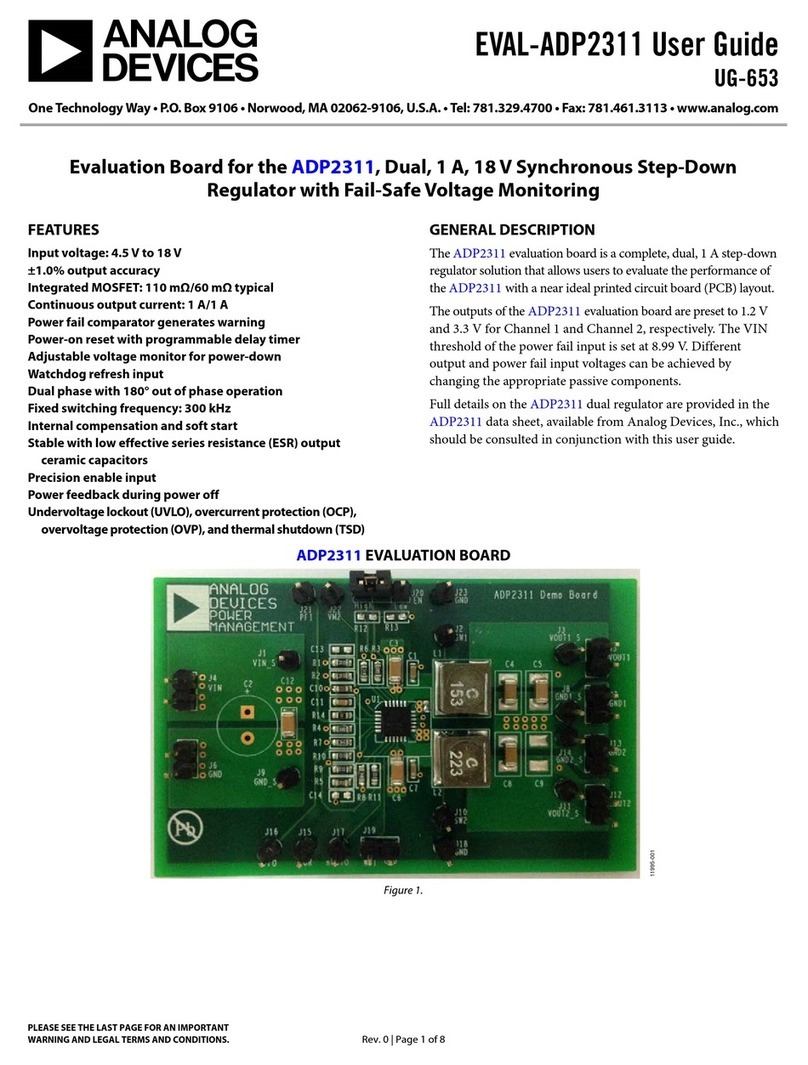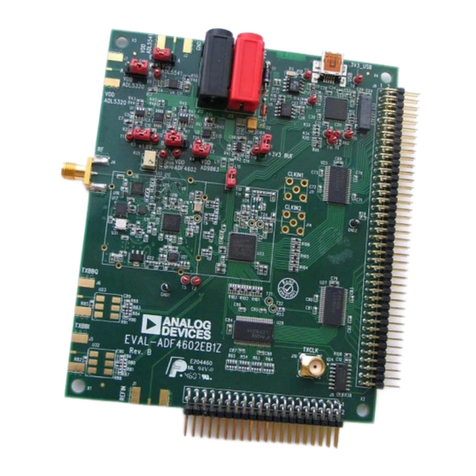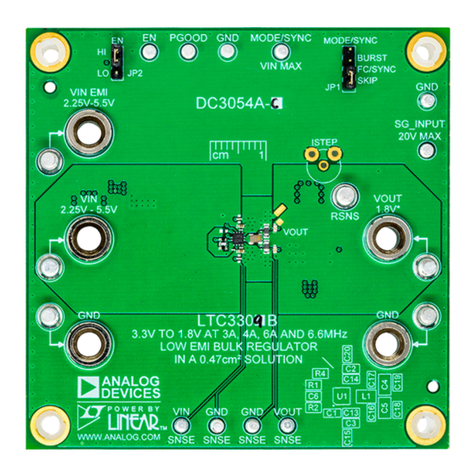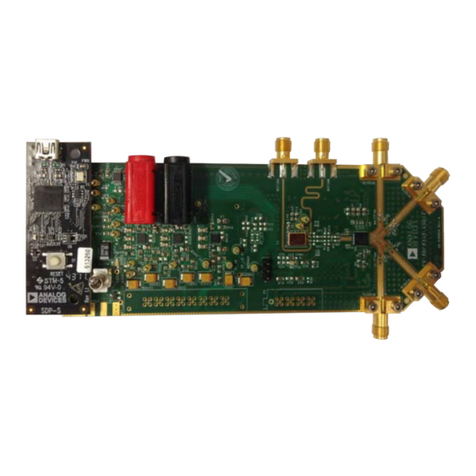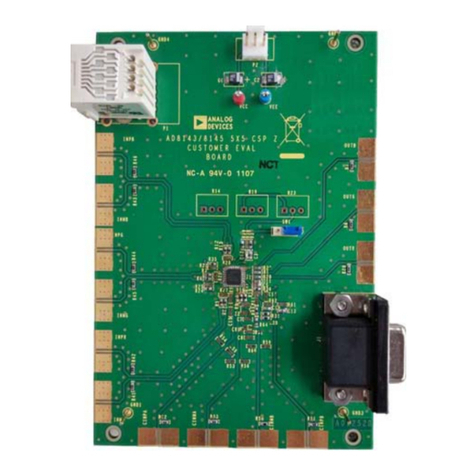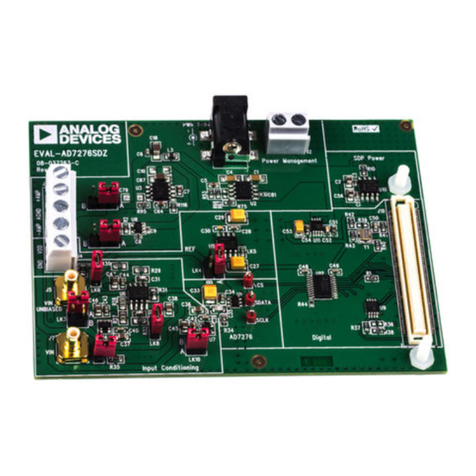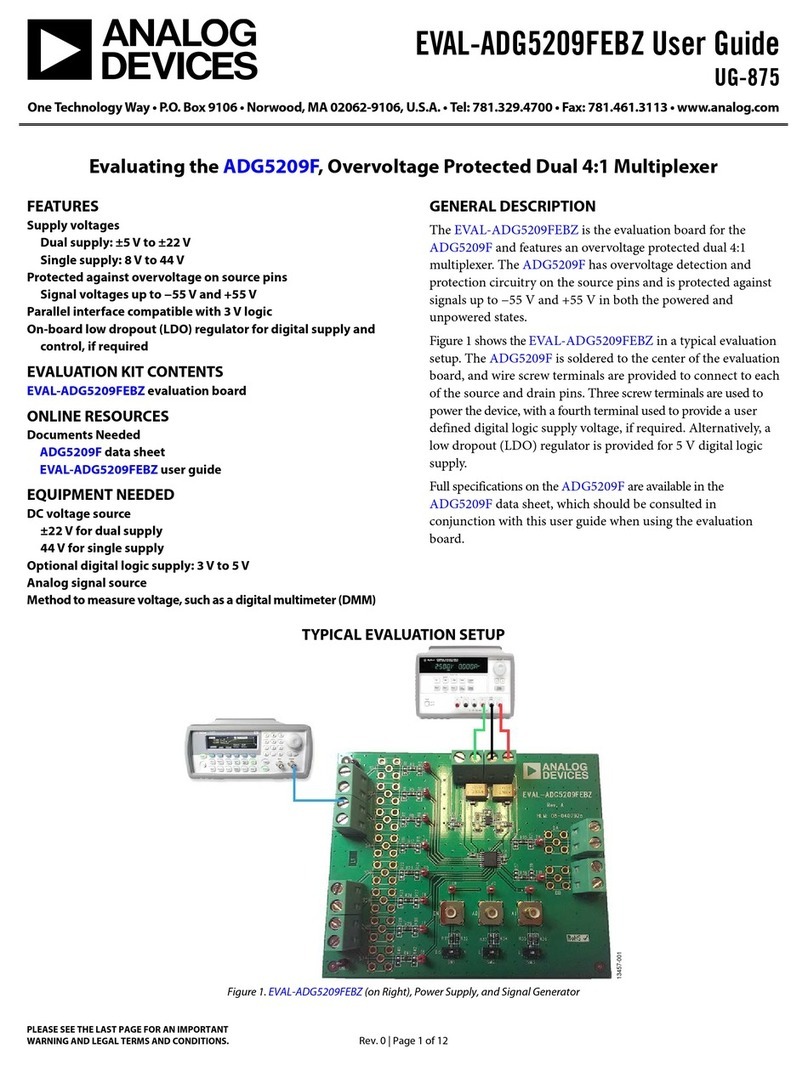
Evaluation Board User Guide UG-197
Rev. 0 | Page 3 of 16
SINGLE SUPPLY
Two independent and isolated circuits comprise the ADuM3471
evaluation board. The lower half of the board, shown in Figure
2, is a single power supply configuration (see the appropriate
ADuM347x data sheet for applications information about the
ADuM347x in this configuration).
Figure 2. Single Supply
The single supply comes configured as a 5 V secondary isolated
supply with a 5 V primary input supply, which can provide up
to 2.5 W of regulated, isolated power. It can be reconfigured for
a 3.3 V secondary isolated supply with a 5 V or 3.3 V primary
input supply (see the Other Input and Isolated Output Supply
Options section). Figure 9 shows the single supply schematic.
TERMINALS
The single supply has terminal blocks on Side 1 (the primary/
power supply input side) and Side 2 (the secondary/power supply
output side). A 4.3 mm isolation barrier separates Side 1 and
Side 2. Figure 3 shows these terminal locations. Although the
board is populated with the ADuM3471, it is designed to
accommodate the entire ADuM347x family. Therefore, the
silkscreen shows I/Ox to denote the four iCoupler® data
channels.
J1 and J3 are 0.1 inch (2.54 mm) 6x1 headers. J2 has pads for an
optional SMA connector (not populated) terminated into 50 Ω.
Table 1 summarizes the functions of the terminal connections.
They are described in detail in the Input Power Connections,
Output Power Connections, and Data I/O Connection sections.
09417-003
SIDE 1 TERMINALSIDE 2 TERMINAL
Figure 3. Single Supply Terminals
Input Power Connections
Connect +5 V to Pin 1 of J1, labeled +5V IN (or +3.3 V for a
3.3 V primary input supply with a 3.3 V secondary isolated
supply). Connect the supply negative to Pin 6, labeled GND
(GND1 in the schematic). These are the only off-board
connections required for the single supply to function.
+5 V IN supplies VDD1 and VDDA to U1, the single supply
ADuM3471. VDD1 is the ADuM3471 transformer driver supply,
and VDDA is its primary supply voltage (see the ADuM347x data
sheet for additional information about these pin functions).
VDD1/VDDA is bypassed by a 47 µF ceramic capacitor, labeled C1,
and a 0.1 µF local bypass capacitor located close to the ADuM3471
(C2). R15, R16, C28, and C29 are provided for an optional and
unpopulated snubber, which can be used to reduce radiated
emissions.
Power is transferred to Side 2 by a regulated push-pull converter
comprising the ADuM3471 (U1), an external transformer (T1
or T2), and other components (see the ADuM347x data sheet
for an explanation of this circuit functionality).
Output Power Connections
An output load can be connected to Pin 1 of J3, labeled +5V/3.3V
in the silkscreen and +5V/3.3V OUT in the schematic, which is
the isolated, regulated 5 V output supply. Connect the return of
the load to Pin 6 of J3, labeled GND ISO, which is the Side 2
ground reference. It is named GND2 in the schematic. Including
the current necessary for the ADuM3471 secondary side (I/O
and PWM control), this supply can provide up to 500 mA in the
default 5 V primary input supply, 5 V secondary isolated supply
configuration. The isolated data channels on Side 2 load the
secondary isolated supply and reduce the total available current.
See the ADuM347x data sheet electrical characteristics for speci-
fications on output supply current to determine how much
current the Side 2 I/O lines require at a given data rate. Figure 5
through Figure 8 in this user guide show how the power
supply’s efficiency varies with load current, switching frequency,
and temperature.
Data I/O Connection
The EVAL-ADuM3471 supports a variety of I/O configurations.
The user has access to all four of the ADuM3471 digital isolation
channels via the terminals. With an ADuM3471 populated,
I/O1 through I/O3 are inputs on Side 1 and outputs on Side 2.
I/O4 is an output on Side 1 and an input on Side 2. Table 1
identifies the ADuM3471 pins to which the I/Ox are connected.
Populating J2 allows the user to connect the ADuM3471 VIA
input directly to a 50 Ω signal source. R33 must be shorted with
a 0 Ω resistor to connect the SMA to VIA. R34, R35, and R36
allow the user to implement various I/O interconnection
schemes. For example, soldering 0 Ω 0805s to R34 and R35 ties
VIA, VIB, and VIC together.
Note that R36 must not be populated if an external signal
source is applied to I/O3. This can cause permanent damage to
the ADuM3471 because an output pin is being driven. R36 can
be used to connect VIC to VOD so that VOD drives VIC. C5
through C7 and C9 should not be populated when an
